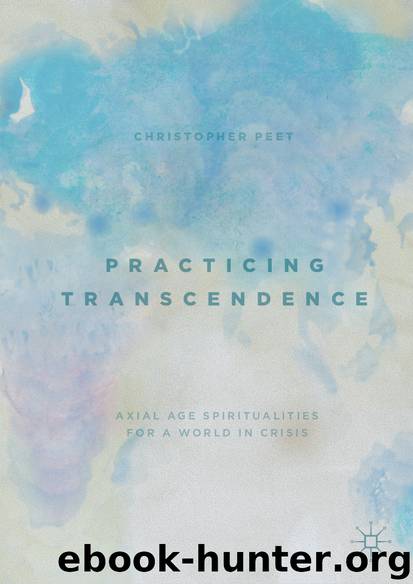Practicing Transcendence by Christopher Peet

Author:Christopher Peet
Language: eng
Format: epub
ISBN: 9783030144326
Publisher: Springer International Publishing
Axial Age Israel
Israel , by contrast to “China” and “India,” is a small civilization existing on the margins of established empires (or on the “peripheries” or “semi-peripheries” of powerful “centers”). Small here is meant culturally, demographically, geographically, and politically by comparison with the multi-cultural, multi-state, multi-lingual patchworks of India and China. Really, the proper comparison to the latter two is the ancient Near East as a whole, inclusive of Israel (and Greece) as small patches within the patchwork, bit players alongside larger empires.
Israelite identity seems continuously defined contrastively to the civilizations it is not. The mythical Abraham leaves the city of Ur in Mesopotamia to begin a new life in the Promised Land; in the mid-1200s BCE a people (which we could call, somewhat mistakenly, “the Israelite nation”) led by the mythical Moses undertakes its exodus from Egypt in order to return to that Promised Land. From these people, led by a series of judges, is developed through the great (and mythical?) figure David, a monarchy uniting the twelve tribes of Israel (really, two major divisions between north and south), strategically established in Jerusalem (at the time of David’s capture of the city, it was on “neutral ground… at the boundary between Judah and the northern tribes” [Sweeney, 2000, p. 27]). David brings the ark of the covenant to Jerusalem, cementing its position as center; (the mythical?) Solomon his son builds the temple there.
This brief period of a united monarchy under, first, David , then Solomon , gives way to two kingdoms by about 1000 BCE. The northern kingdom of Israel is conquered by the Assyrians in 722 BCE, after which no trace remains of the kingdom or its people, and the land becomes Samaria (presumably, some Israelites find refuge in Judah and become assimilated within its population, while many Samarians/Samaritans would be descendants of northern Israel ). The southern kingdom of Judah avoids this fate; but some century and a half later is conquered by Babylon (in 587 BCE) and a number taken into captivity. Exile ends in 538 BCE owing to the change in hands of imperial power, and corresponding change in imperial policy, from Babylon to Persia . From the latter exilic community, a small group will return to Jerusalem and what was formerly Judah (now the Persian province, Yehud ), rejoin those who had not been taken captive, and rebuild the temple. With Alexander’s success against Persia , the area will become Judaea. It is during this period that Judaism originates, as well as the designation Jewish. Judaea will in turn become a Roman province in 63 BCE, and the Second Temple will in turn be destroyed by the Romans in 70 CE. The Second Temple period can be periodized in terms of which foreign power dominated: 538–333 BCE, Persian; 332–63 BCE, Hellenistic ; 62 BCE–70 CE, Roman (Murphy, 2000). (To deal with the awkwardness of these numerous different designations of pre-monarchical Israel, the northern and southern kingdoms, Judah-cum-Yehud-cum-Judaea, and so on, I will use the
Download
This site does not store any files on its server. We only index and link to content provided by other sites. Please contact the content providers to delete copyright contents if any and email us, we'll remove relevant links or contents immediately.
The Lost Art of Listening by Michael P. Nichols(7108)
Why I Am Not A Calvinist by Dr. Peter S. Ruckman(4031)
The Rosicrucians by Christopher McIntosh(3347)
Wicca: a guide for the solitary practitioner by Scott Cunningham(3024)
Signature in the Cell: DNA and the Evidence for Intelligent Design by Stephen C. Meyer(2855)
Real Sex by Lauren F. Winner(2832)
The Holy Spirit by Billy Graham(2745)
To Light a Sacred Flame by Silver RavenWolf(2652)
The End of Faith by Sam Harris(2612)
The Gnostic Gospels by Pagels Elaine(2372)
Waking Up by Sam Harris(2302)
Nine Parts of Desire by Geraldine Brooks(2259)
Jesus by Paul Johnson(2201)
Devil, The by Almond Philip C(2181)
Heavens on Earth by Michael Shermer(2169)
The God delusion by Richard Dawkins(2153)
Kundalini by Gopi Krishna(2077)
Chosen by God by R. C. Sproul(2034)
The Nature of Consciousness by Rupert Spira(1950)
